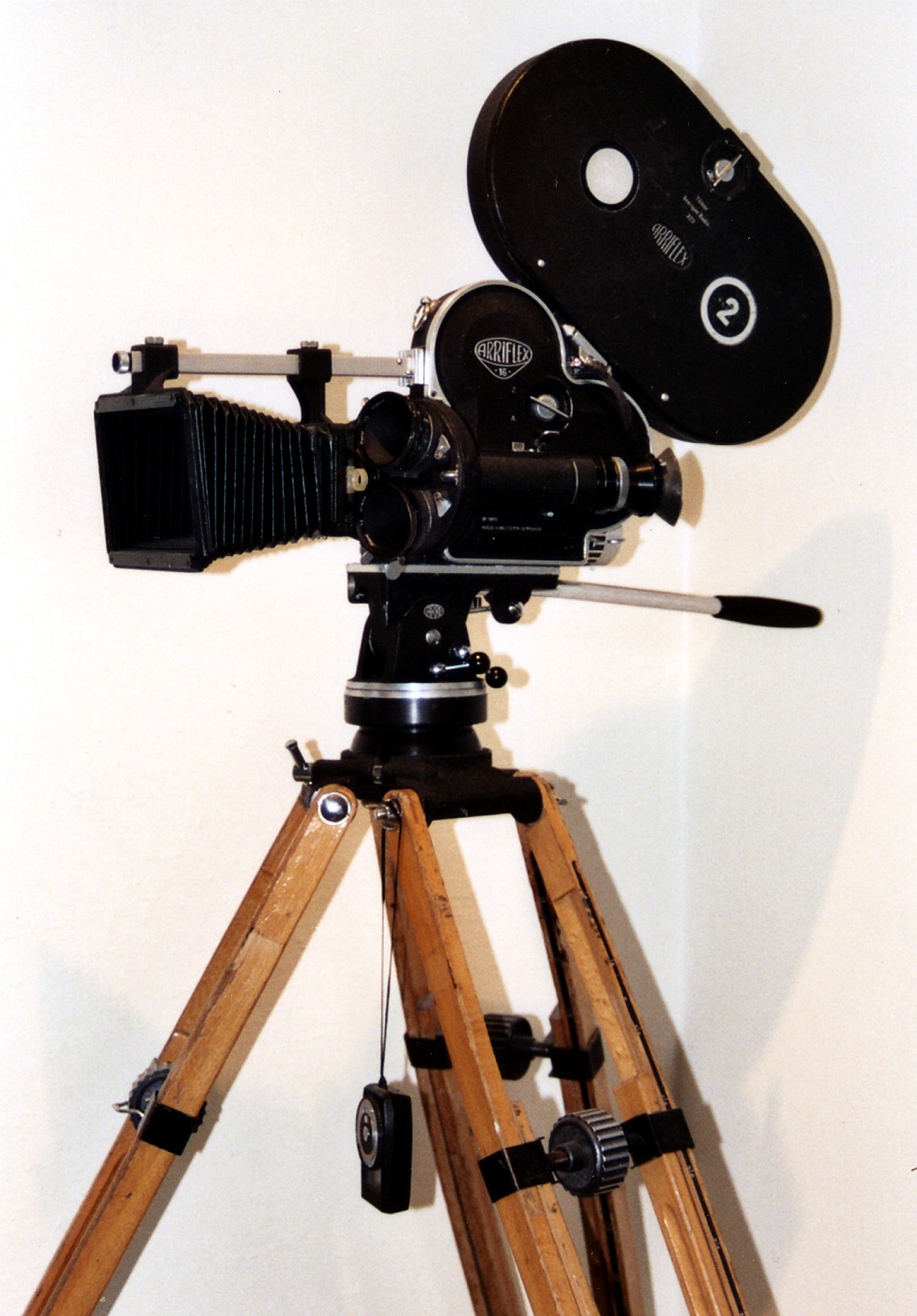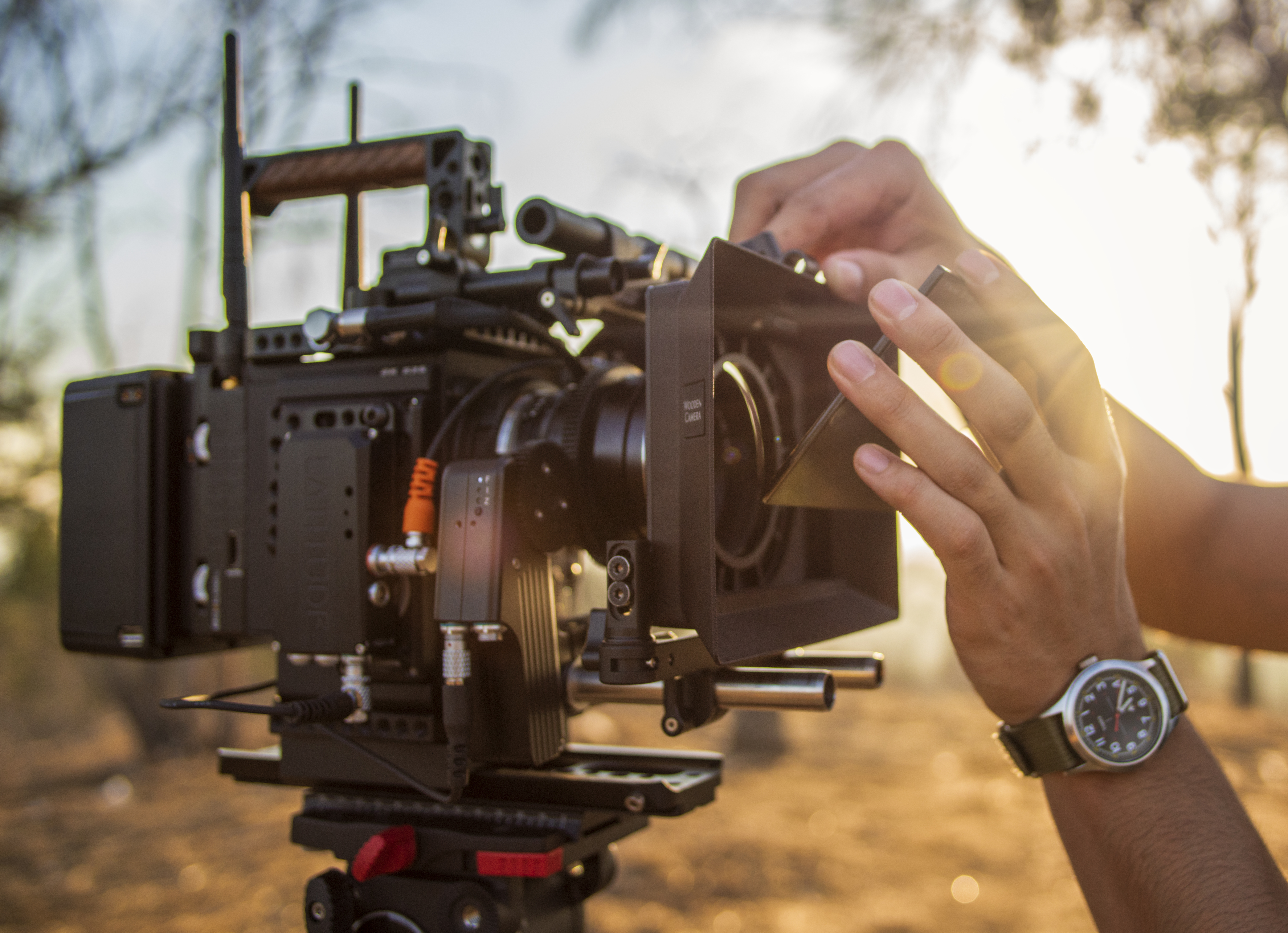|
Arriflex 16BL
The Arriflex 16BL is ARRI's first silent 16mm production motion picture camera, released in 1965. It was replaced by the Arriflex 16SR in 1975. Function The functionality is similar to the Arriflex 16M. It is built around the spinning reflex twin-bladed "butterfly" mirror shutter, set at 45 degrees horizontally to the lens axis. It is self blimped and measures 31 dB while running, in 3 ft distance from the camera. The 16BL introduced the ARRI Bayonet lens mount, which was also used in later cameras. This stainless steel mount is much stronger than the aluminium Arri standard mount. The viewfinder is located on the gate door. The Arriflex 16BL can load 1200 ft and 400 ft external magazines, which can be attached to the top. The camera is driven by a 12V crystal control motor, which can be controlled on the right side. It can record between 8 and 48 fps. The standard matte box In photography and videography, a matte box is a device attached to the end o ... [...More Info...] [...Related Items...] OR: [Wikipedia] [Google] [Baidu] |
ARRI
The Arri Group () is a German manufacturer of motion picture film equipment. Based in Munich, the company was founded in 1917. It produces professional motion picture cameras, lenses, lighting and post-production equipment. Hermann Simon mentioned this company in his book ''Hidden Champions of the 21st Century'' as an example of a " hidden champion". The Arri Alexa camera system was used to film Academy Award winners for Best Cinematography including ''Hugo'', ''Life of Pi'', ''Gravity'', '' Birdman'', '' The Revenant'' and '' 1917''. History Early history Arri was founded in Munich, Germany on 12 September 1917 by August Arnold and Robert Richter as Arnold & Richter Cine Technik. The acronym ''Arri'' was derived from the initial two letters of the founders' surnames, ''Ar''nold and ''Ri''chter. In 1924, Arnold and Richter developed their first film camera, the small and portable Kinarri 35. In 1937, Arri introduced the world's first reflex mirror shutter in the Arriflex 35 c ... [...More Info...] [...Related Items...] OR: [Wikipedia] [Google] [Baidu] |
16mm Film
16 mm film is a historically popular and economical gauge of film. 16 mm refers to the width of the film (about inch); other common film gauges include 8 and 35 mm. It is generally used for non-theatrical (e.g., industrial, educational, televisual) film-making, or for low-budget motion pictures. It also existed as a popular amateur or home movie-making format for several decades, alongside 8 mm film and later Super 8 film. Eastman Kodak released the first 16 mm "outfit" in 1923, consisting of a camera, projector, tripod, screen and splicer, for US$335 (). RCA-Victor introduced a 16 mm sound movie projector in 1932, and developed an optical sound-on-film 16 mm camera, released in 1935. History Eastman Kodak introduced 16 mm film in 1923, as a less expensive alternative to 35 mm film for amateurs. The same year the Victor Animatograph Corporation started producing their own 16 mm cameras and projectors. During the 1920s, the fo ... [...More Info...] [...Related Items...] OR: [Wikipedia] [Google] [Baidu] |
Arriflex 16SR
The Arriflex 16SR is a motion picture camera product line created by Arri, introduced in 1975. This 16SR camera series is designed for 16 mm filmmaking in Standard 16 format. 'SR' Stands for Silent Reflex. In 1982, Arri released the 16SR2, for improved function over the previous version, e.g. lower operational noise level. In 1992, Arri released the 16SR3, the latest and the only series that can support the Super 16 format in the 16SR series without modification to the Super 16 format. It appeared in two versions: "Advanced" & "HS" (High Speed), for high speed filming. The 16 SR series of cameras are distinguished by their small portable profile, their multidirectional viewfinder having a correctly upright picture in all positions, to the right and to the left of the camera, a crystal controlled motor and a quick-change 400 ft coaxial magazine. A 200 ft coaxial magazine was originally featured in the photo of the 16 SR in an Arri collective brochure in 1975, but this ... [...More Info...] [...Related Items...] OR: [Wikipedia] [Google] [Baidu] |
Arriflex 16M
The Arriflex 16ST, also Arriflex 16S, is a 16mm MOS production motion picture camera released in 1952 by ARRI. The camera utilizes a voltage of 8.4 volts DC Function Like earlier models, the ARRI 16ST was built around the spinning reflex twin-bladed "butterfly" mirror shutter designed by Erich Kästner, chief engineer at Arnold & Richter Cine Technik (ARRI), Arri Group, set at 45 degrees horizontally to the lens axis. It uses a 3-lens turret with ARRI standard mounts. The viewfinder is located on the gate door. The design is very similar to the Arriflex 35. The Arriflex 16ST can load 100ft daylight spools internally and a 400ft external magazine can be attached to the top. The camera is driven by a 12V crystal control motor, which can be controlled on the right side. It can record between 8 and 48 fps. The motor also has a reverse mode, which can be used for double exposure for example. The standard matte box In photography and videography, a matte box is a device attached ... [...More Info...] [...Related Items...] OR: [Wikipedia] [Google] [Baidu] |
Viewfinder
In photography, a viewfinder is what the photographer looks through to compose, and, in many cases, to focus the picture. Most viewfinders are separate, and suffer parallax, while the single-lens reflex camera lets the viewfinder use the main optical system. Viewfinders are used in many cameras of different types: still and movie, film, analog and digital. A zoom camera usually zooms its finder in sync with its lens, one exception being rangefinder cameras. History Before the development of microelectronics and electronic display devices, only optical viewfinders existed. Direct optical viewfinders Direct viewfinders are essentially miniature Galilean telescopes; the viewer's eye was placed at the back, and the scene viewed through the viewfinder optics. A declining minority of point and shoot cameras use them. Parallax error results from the viewfinder being offset from the lens axis, to point above and usually to one side of the lens. The error varies with distance, being ... [...More Info...] [...Related Items...] OR: [Wikipedia] [Google] [Baidu] |
Matte Box
In photography and videography, a matte box is a device attached to the end of a lens in order to prevent light leakage. It performs and mounts essentially the same as a lens hood, but usually includes adjustable fins called ''French flags''. Another purpose of a matte box is to hold filters in place in front of the lens. Some are supported by two rods that run the length of the camera, while others are supported by the lens itself. A matte box may have a bellows, a rigid sunshade, or both. If both, the bellows is positioned within the rigid sunshade, having a mask which may be adjusted forward or backward to suit the angle of view of the camera system. See also * Barn doors – stage lights * Lens hood – still camera Further reading * to Roger C. Field Roger C. Field (born 31 July 1945) is best known as the inventor of the Foldaxe folding electric guitar which won the Designers' Choice Award for the United States in 1980. He is also an inventor with over 100 patents, ... [...More Info...] [...Related Items...] OR: [Wikipedia] [Google] [Baidu] |




